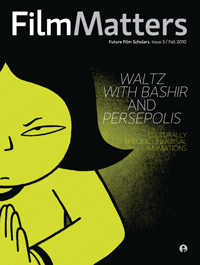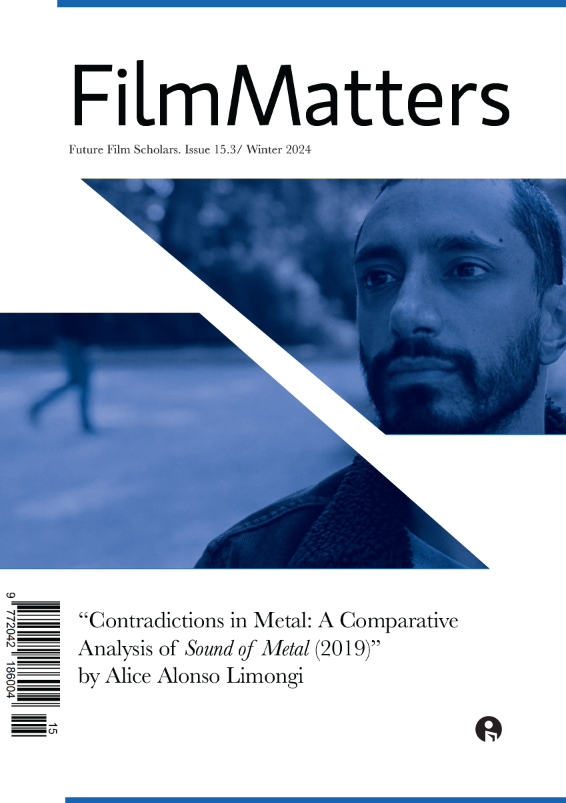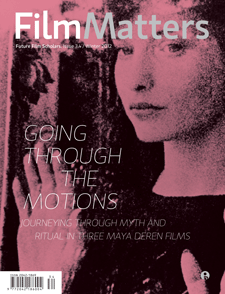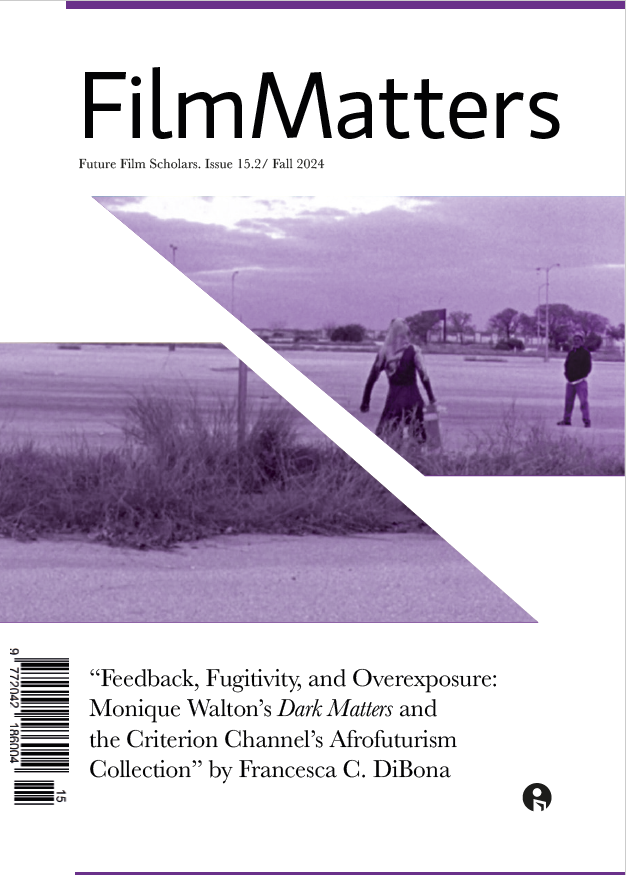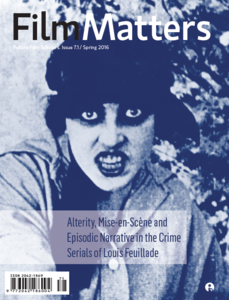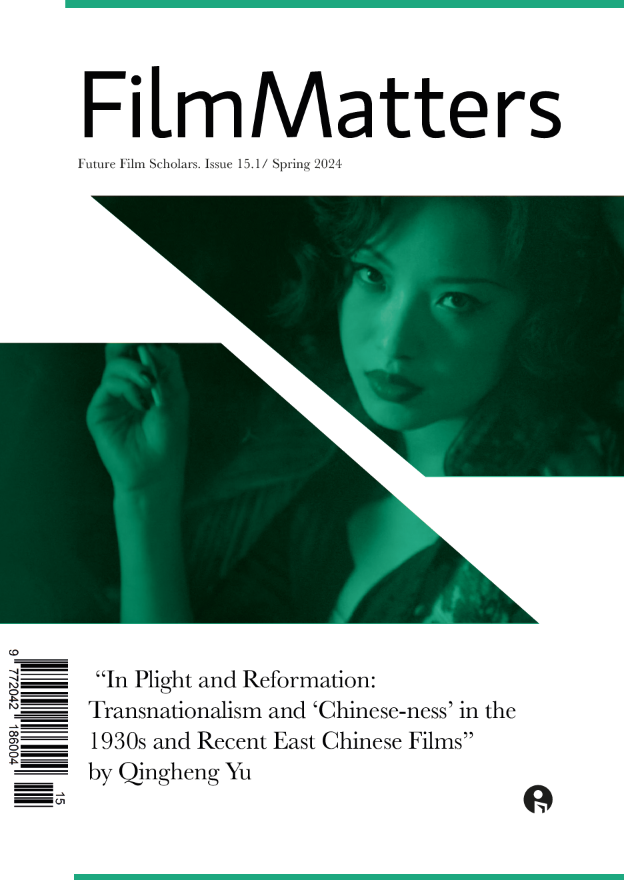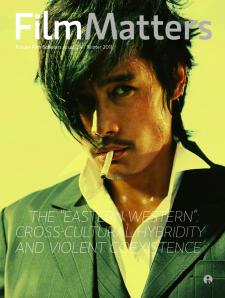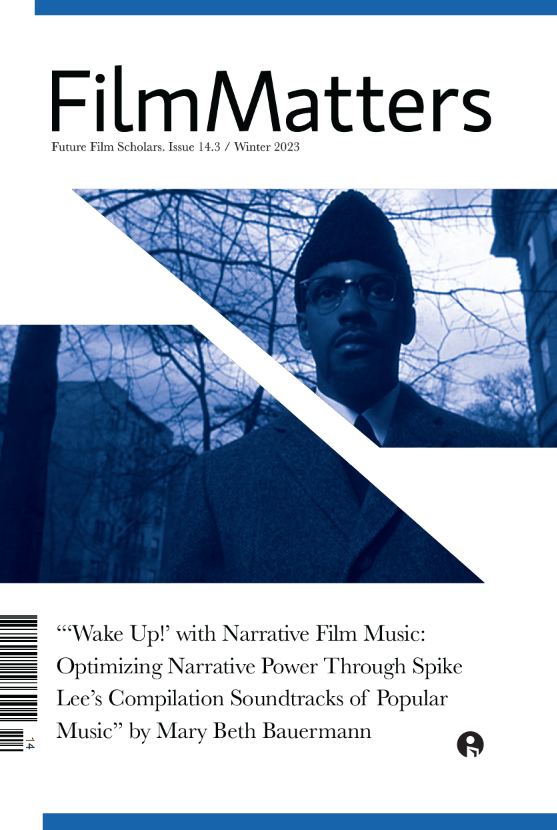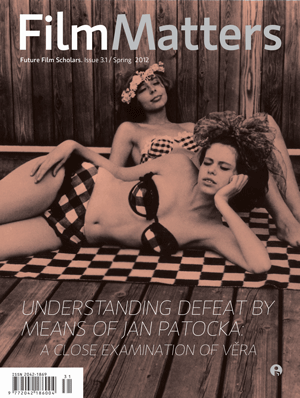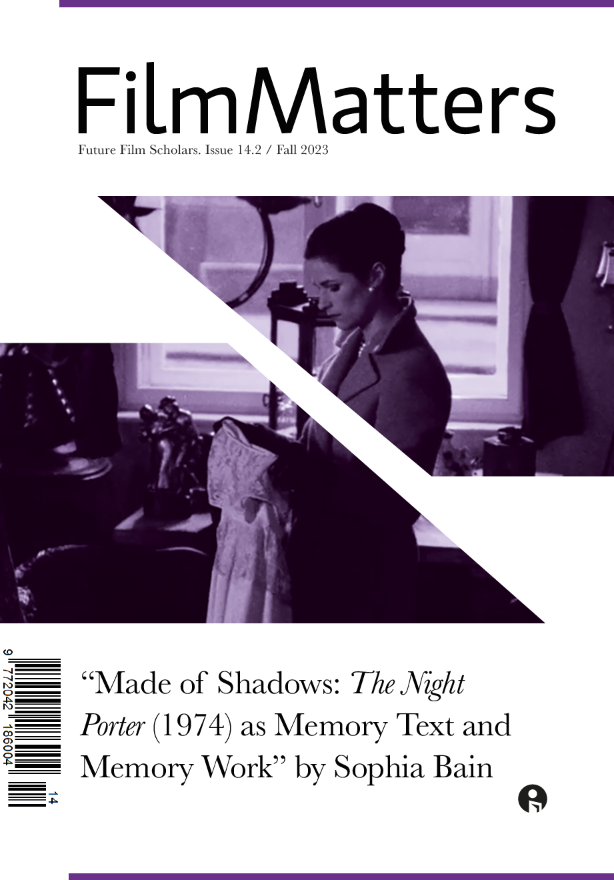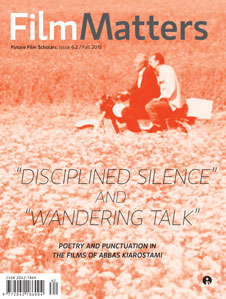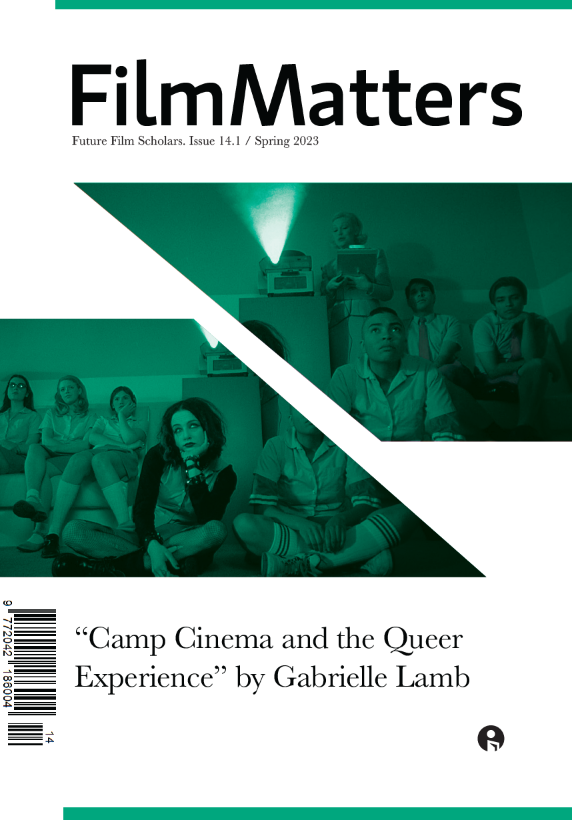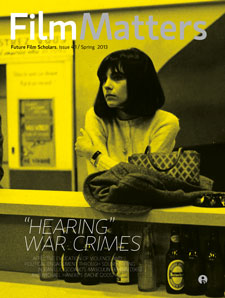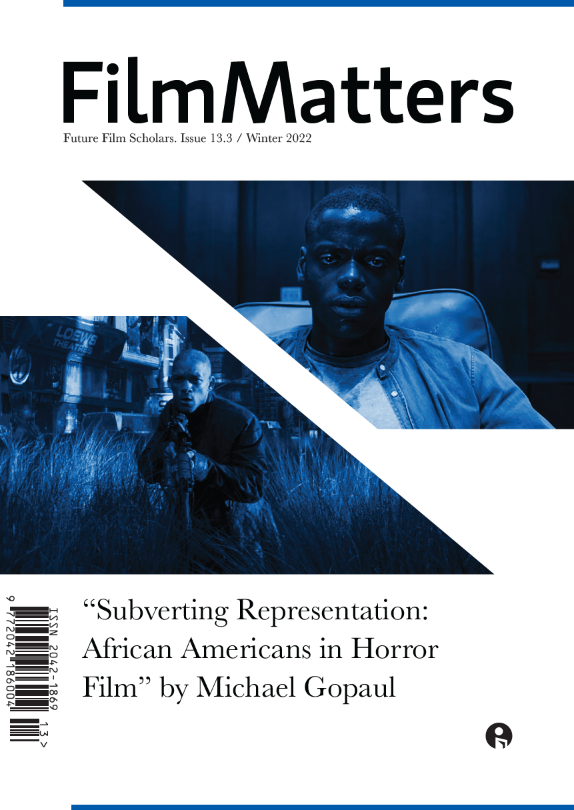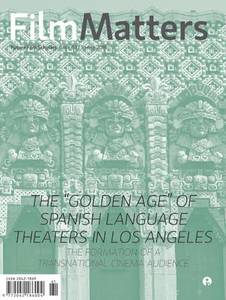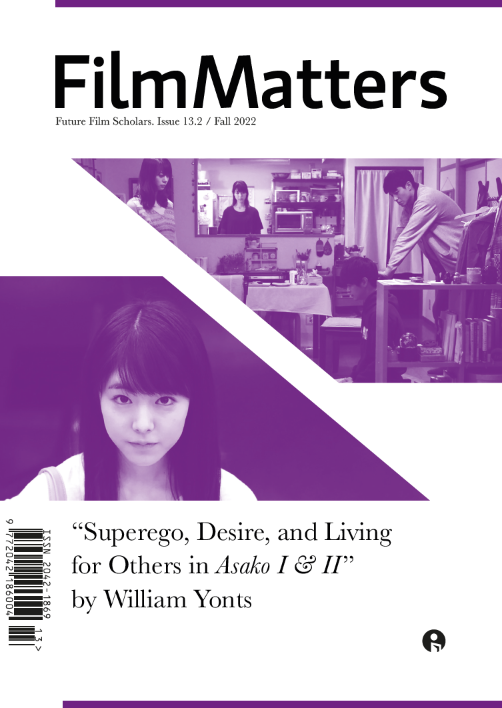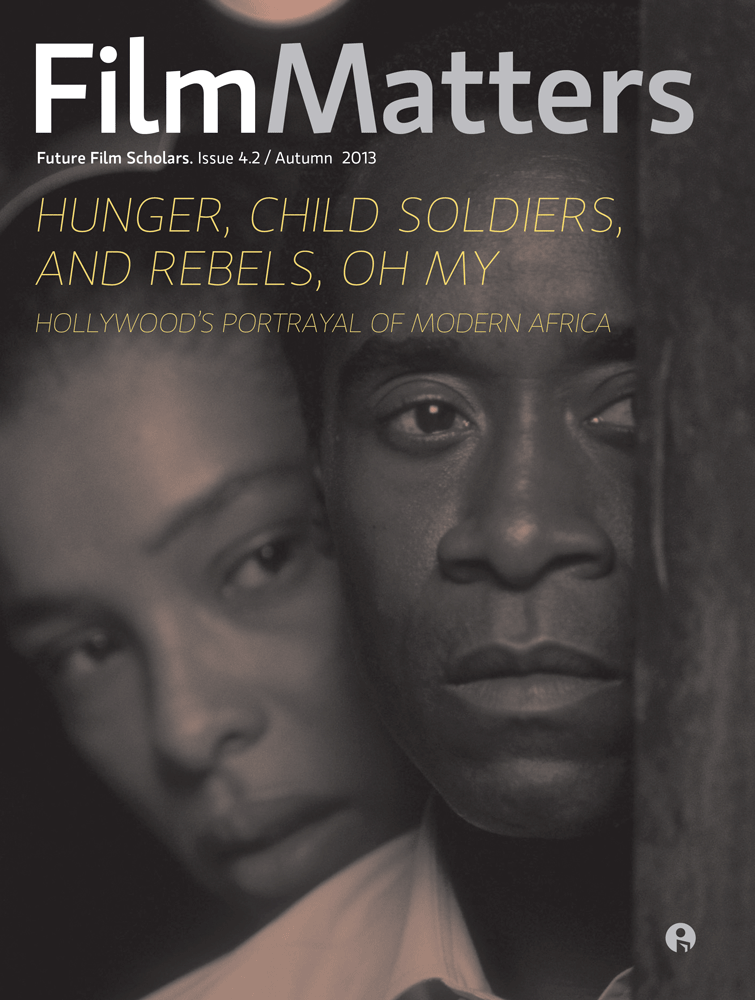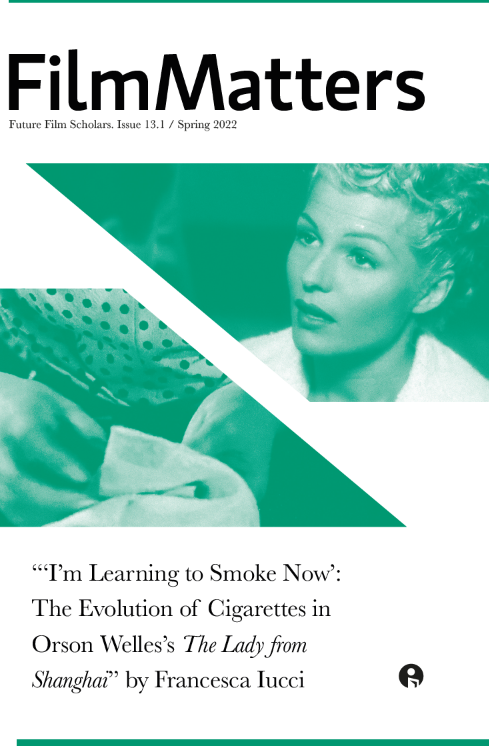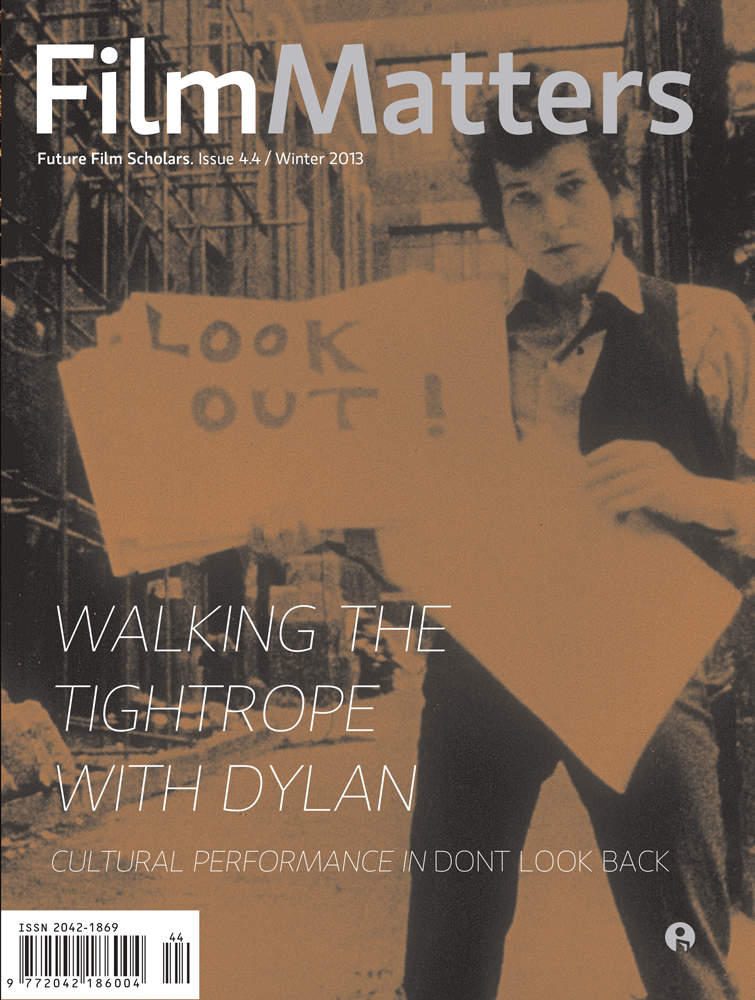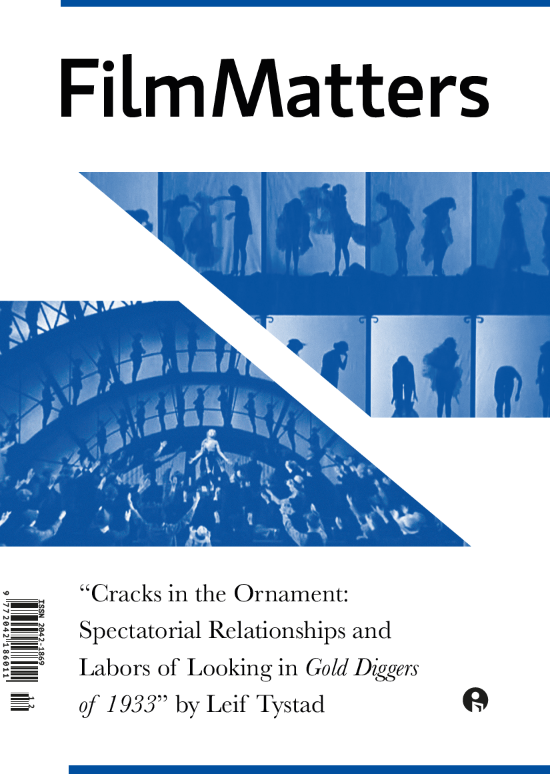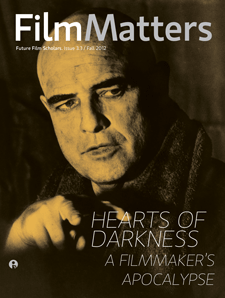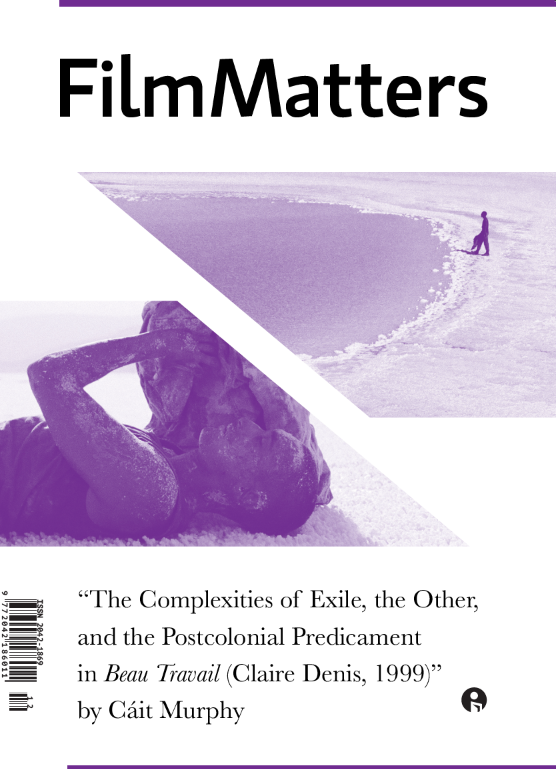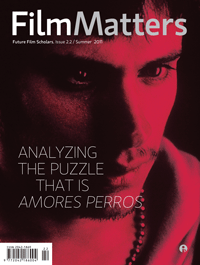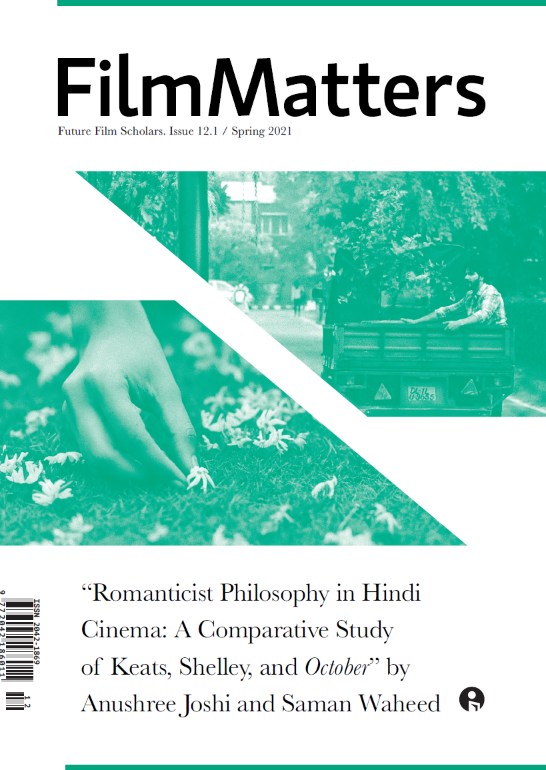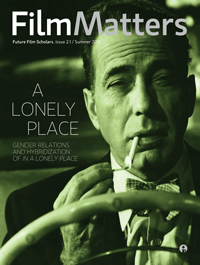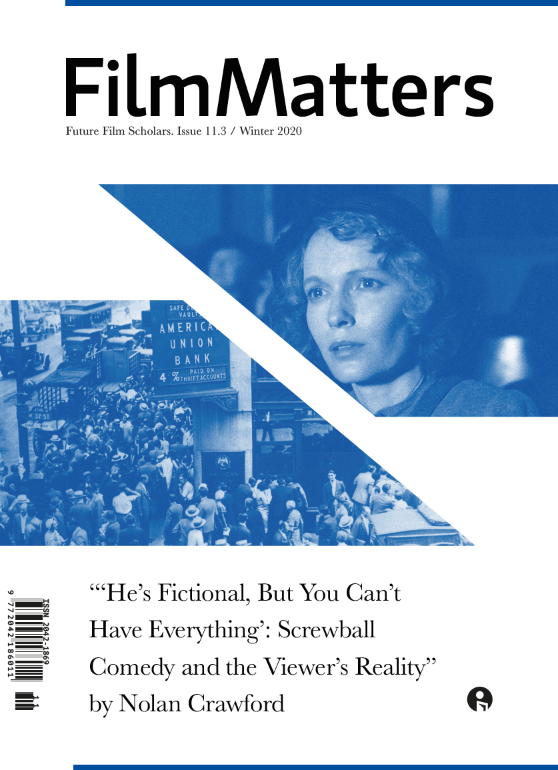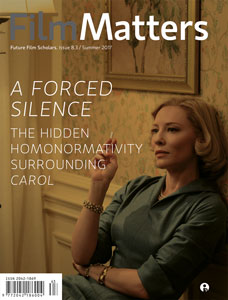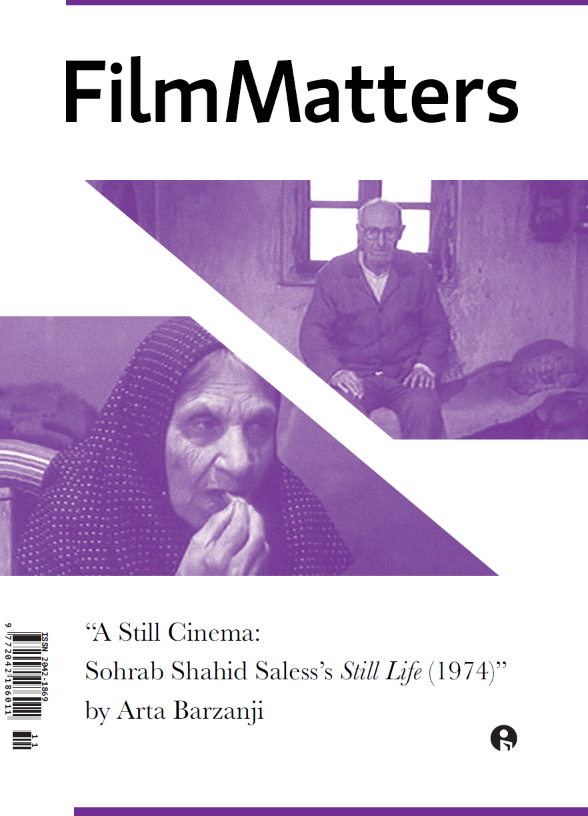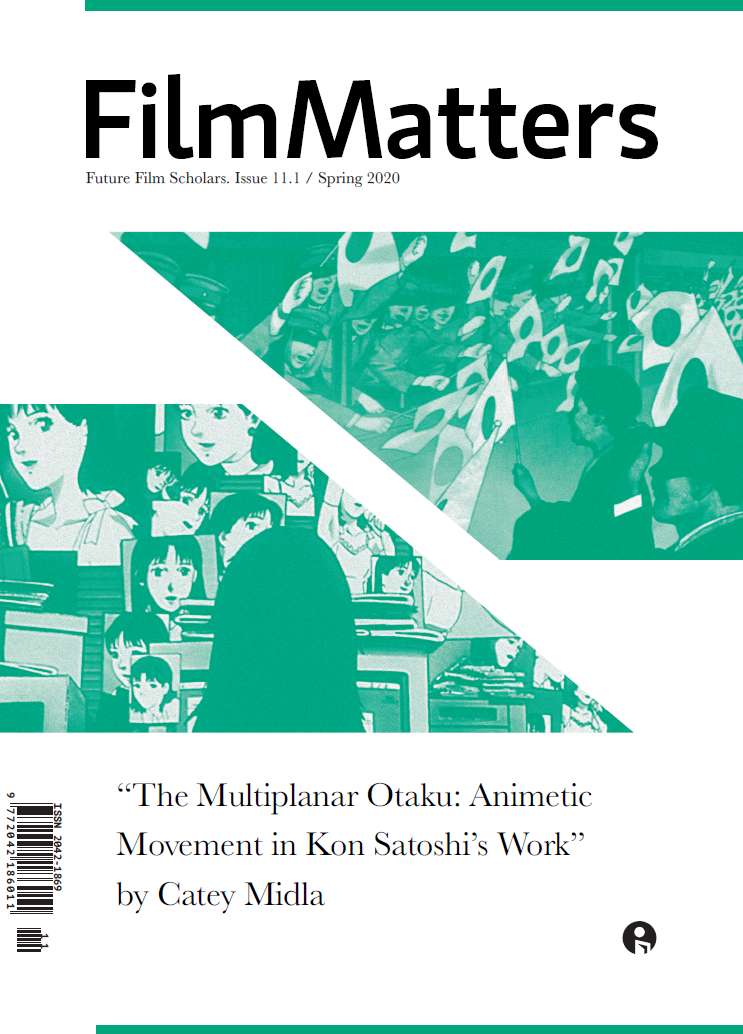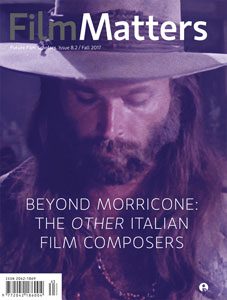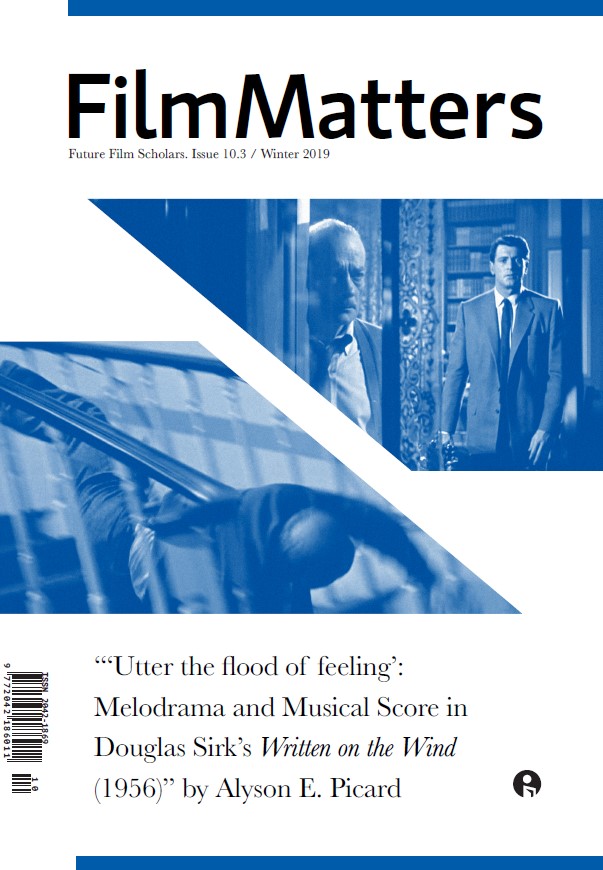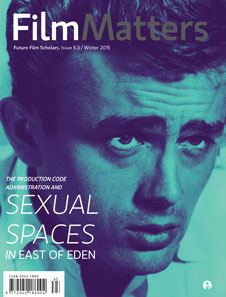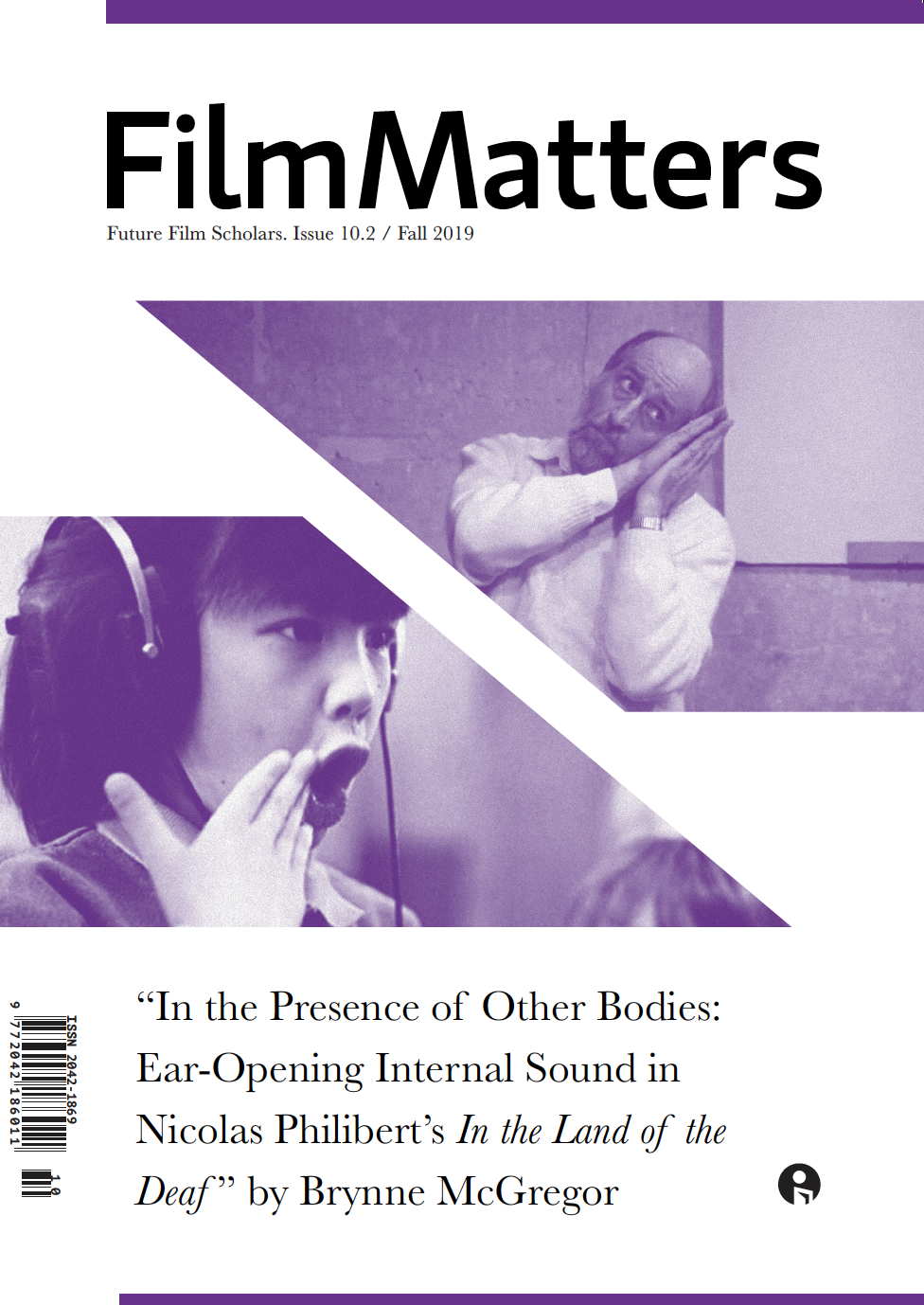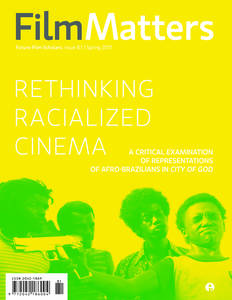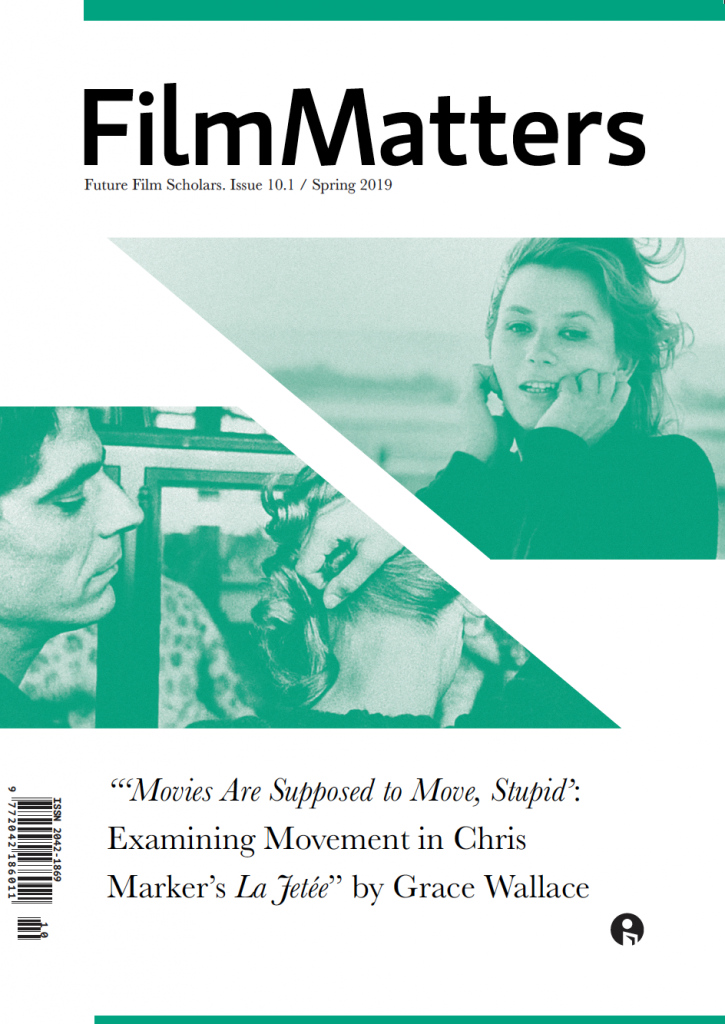Film Matters is happy to report that we have found our three judges for the 2017 Masoud Yazdani Award for Excellence in Undergraduate Film Scholarship. Many thanks to all who offered! And we look forward to announcing the winner toward the end of 2017 — watch this space!
Calling All Instructors: Judges Needed
Now that all volume 7 (2016) issues have been released, Film Matters is searching for three judges to determine the winner of the 2017 Masoud Yazdani Award for Excellence in Undergraduate Film Scholarship. For more information about this award, please see the initial announcement (https://www.filmmattersmagazine.com/2014/09/02/announcing-the-masoud-yazdani-award-for-excellence-in-undergraduate-film-scholarship/).
If you are a current instructor of film (graduate student, tenured/tenure-track professor, adjunct, etc.) at an institution of higher education, then please think about providing this valuable service to Film Matters and recognizing the dedicated work of an emerging film scholar, as well as his/her mentor and academic department.
All authors whose articles were published in 7.1, 7.2, and 7.3 of Film Matters as the result of a peer-review process automatically qualify for consideration. Twenty authors from volume 7 are eligible, representing the following institutions:
- American University
- Carleton College
- Concordia University
- King’s College London (2)
- Muhlenberg College
- New York University
- Portland State University
- Simon Fraser University
- Southampton Solent University (2)
- University of Florida
- University of Nebraska-Lincoln
- University of North Carolina Wilmington
- University of Notre Dame
- University of Passau
- University of Southern California
- University of Warwick
- Virginia Commonwealth University
- Washington and Lee University
Please email Liza Palmer (futurefilmscholars AT gmail.com) as soon as possible, indicating your interest in serving as a judge. Materials and policies/procedures will be provided to the judging board once it is populated. And the board, as a group, will decide whether they want to work anonymously or not.
Thanks, in advance, for your support and promotion of this award, which celebrates not only young film scholars, but also Masoud Yazdani of Intellect.
FM 7.3 (2016) Has Arrived!
Film Matters is pleased to announce that issue 7.3 is officially out. It’s our last 2016 issue — and a big one, at that!
Here, you’ll find the following peer-reviewed feature articles:
- Constructing (Black) Girlhood: Americanization, Assimilation, and Ambivalence by Ouma Amadou
- Putney Swope and Watermelon Man: Black Replacements of White Character Tropes by John Bennett
- “The Good, the Bad and the Strudel”: How Quentin Tarantino’s Inglourious Basterds (2009) Manipulates Its Audience with Violence by Sarah E. Beyvers
- Betraying Dostoevsky: Robert Bresson and the Art of Faithful Adaptation by Christopher LeMaire
- Dystopian British Films in the Postmodern Era: A Critical Analysis of V for Vendetta and Never Let Me Go by Myrto Nika
- España Reimagined by Robert Yeagle
- “Images Are My Memory”: Chris Marker’s Sunless by Nace Zavrl
The latest “Mapping Contemporary Cinema” article:
-
Affairs of the Phone: Indiewood, a Bespoke Future, and Virtual Love in Spike Jonze’s Her (2013) by Donya Maguire
A special dossier on the 2015 New York Film Festival from students at Hendrix College:
- New York Film Festival Dossier: Introduction by Christian Leus, Connor Newton, Adam Reece, and Dominique Silverman
- Sweet Dreams: The Power of Compassion and Politics in Cemetery of Splendour (2015) by Christian Leus
- Cinema’s Right to Tragedy: A Personal Exploration of 9/11’s Inclusion in Thomas Bidegain’s Les Cowboys (2015) by Connor Newton
- Shared Dreaming by Adam Reece
- Copy Is Everything: The Power of Communal Memorializing Through Film by Dominique Silverman
The following featurette:
- Unleashing the Barbaric Yawp: The Elusive Quest for Carpe Diem by Catherine Douglas Moran
An original infographic:
-
How the Trope of Time Travel Is Used in Movies Infographic by Zhanat Tolubaev
As well as book and film/DVD/Blu-ray reviews by: Abigail Anundson, Jackson Cooper, Connor Haslam, Harsh Mahaseth, Brianna Okamoto, Jordan Parkhurst, Lydia Plantamura, Mina Radovic, Chic Scaparo, Jordan Scharaga, Lesley Alicia Tye, Kailyn N. Warpole, and Rachel Wassil.
For more information about issue 7.3, please visit Intellect’s website: https://www.intellectbooks.co.uk/journals/view-issue,id=3261/
Film Matters is always looking for new authors and guest editors. Please get in touch with us today!
Filmatique Screens New Asian Voices in May
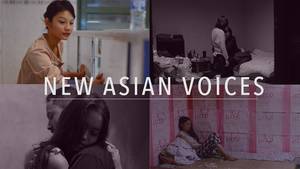 During the month of May, Filmatique will host a collection of films from New Asian Voices. First films from Peng Fei Song, Hyun-ju Lee, and Eddie Cahyono screen alongside the elegant third feature from Le-Van Kiet.
During the month of May, Filmatique will host a collection of films from New Asian Voices. First films from Peng Fei Song, Hyun-ju Lee, and Eddie Cahyono screen alongside the elegant third feature from Le-Van Kiet.
Though from countries as diverse as China, South Korea, Indonesia and Vietnam, common themes pervade these narratives — rapid urbanization, economic hardship, ill-fated love, and the erosion of individual identity. Peng Fei Song’s Underground Fragrance delves into a sprawling subterranean community on the outskirts of Beijing; Eddie Cahyono’s Siti takes place in a small Indonesian beach town. Both, however, explore communities forsaken by society, and the determination of young people to survive by whatever means they can. While both Gentle and Our Love Story explore the vicissitudes of love, the former deconstructs an unequal marriage and the role of religion in contemporary Vietnam while Our Love Story chronicles the fears and jubilations of a first love unfolding amid homophobic attitudes in South Korea.
Filmatique’s New Asian Voices Series assesses the social, political and cultural landscape of contemporary Asia through some of the newest and most exciting voices in its cinema.
May 4 – Underground Fragrance by Peng Fei Song / China, 2015
A doomed romance between two inhabitants of a vast underground labyrinth portrays a little-seen Beijing community’s collective dream — to surface to air. Underground Fragrance provides a dark portrait of rapid urbanization and the consequences of economic stratification in contemporary China. The use of silences and extended, masterfully composed shots lends a haunting, surreal atmosphere to this debut feature, registering Peng Fei Song as a talent to watch.
Underground Fragrance premiered at Venice’s Giornate degli Autori, where it won Best Film, and Chicago where it won Best New Director.
May 11 – Our Love Story by Hyun-ju Lee / South Korea, 2016
Yoon-joo is a timid art student in the midst of preparations for her graduate exhibition. Ji-soo is a bartender who radiates confidence. Following a chance encounter at a convenience store they embark on a romance that defies what remain intolerant attitudes toward homosexuality in South Korea. Hyun-ju Lee’s lyrical debut feature explores the nuances of first love between two characters that just happen to both be women.
Our Love Story premiered at San Sebastián, Vancouver, and Jeonju, where it won the Grand Prize for Best Korean Film.
May 18 – Siti by Eddie Cahyono / Indonesia, 2014
Siti is a young mother living in Indonesia. After her husband was gravely injured in a fishing accident, Siti is the sole breadwinner in the household — beachside crab-cracker vendor by day, karaoke entertainer by night. This vivid black-and-white portrait of an ordinary Indonesian woman transforms a symptom of economic hardship — the need to hold two jobs — into a mise-en-abîme of the schizophrenic relationship between a corrupt, oppressive society and its citizens.
Eddie Cahyono’s visually stunning debut feature premiered at Singapore, Hong Kong, Hamburg and Shanghai, where it won Best Screenplay.
May 25 – Gentle by Le-Van Kiet / Vietnam, 2014
Linh is a Vietnamese woman saved from an arranged marriage by Thien, a well-to-do pawnshop owner. She is young and curious; he is older, more controlling. Over time Thien’s unsentimental approach to marriage suffocates Linh, who seeks solace in the Church, infuriating her husband even further. Le-Van Kiet’s elegant third feature delves deep into the psychology of its characters, deconstructing a marriage that was doomed from the start.
Gentle premiered at Busan, Rotterdam and Warsaw.
*Filmatique’s new streaming service introduces films that are socially, culturally, or politically relevant to audiences — often for the first time. The ultimate movie lover’s dream online movie site.
Filmatique is available to US audiences for $4.95/month, with a 30-day free trial. There is a rotating library with 24 films: each week, a new film comes in.
In April, Filmatique emphasized its collection on Post-Soviet cinema, in May it is exploring New Asian Voices, and in June will showcase cinema from Brazil.
Death by Hanging (1968). Reviewed by Film Matters Spring 2017 Editorial Board
Death by Hanging Criterion Blu-ray Review from Liza Palmer
Contributors: Lizzie Bankowski, Tayler Camplin, Chandler Mackenzie Comes, Michael Edwards Jr., Kenneth L. Freyer, Bobby Hartman, Claire Kalb, Megan Kiss, Jeremy Meyers, Kimberly Mariah Smallwood, Chamberlain Staub, Stephanie L. Triplett, Emmett Williams, and Kelli Wofford.
Cinemedia CFP: Cinemas of Distraction
 In his 1926 essay “Cult of Distraction,” Siegfried Kracauer drew attention to the recently constructed grand movie theaters of the time, calling them “palaces of distraction” and “shrines to the cultivation of pleasure.” In such palaces, he wrote, “the stimulations of the senses succeed each other with such rapidity that there is no room left for even the slightest contemplation to squeeze in between them.”
In his 1926 essay “Cult of Distraction,” Siegfried Kracauer drew attention to the recently constructed grand movie theaters of the time, calling them “palaces of distraction” and “shrines to the cultivation of pleasure.” In such palaces, he wrote, “the stimulations of the senses succeed each other with such rapidity that there is no room left for even the slightest contemplation to squeeze in between them.”
Today, these distracting stimulations—and our attraction to them—seem only to have increased. Yet, while distraction is generally seen in negative terms, as a loss of focus or deficit of attention, distraction also hints at the possibility of a radically new means of seeing the world, in which we become increasingly capable of absorbing images, sounds and information from multiple sources at once.
What, then, might “cinemas of distraction” look like? What films or other media would exemplify distraction, from Eisenstein’s “montage of attractions to Vertov’s A Man with a Movie Camera to Nam June Paik’s multi-screen video installations, from YouTube videos to interactive documentaries to video games?
We seek essays, films, and other media (including new media) that address the topic of Cinemas of Distraction for the initial issue of the new online journal of the School of Cinema: Cinemedia. We are particularly interested in works that offer new and innovative ways of thinking about distraction and its possibilities, including works that make creative use of distractive techniques.
Suggested Deadline for Submissions: April 24, 2017
Send to: cinemedia AT sfsu.edu
Debt in History CFP
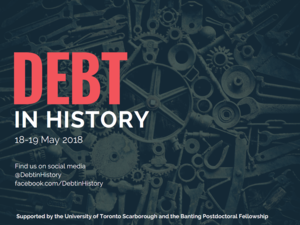 Department of English
Department of English
University of Toronto Scarborough, Canada
18-19 May 2018
At a Q&A that followed a Toronto screening of Little Men (2016), a film about two families’ battle over a lease and its impact on the lives of its central protagonists, director Ira Sachs reflected on the modern-day struggle of many families to remain in the middle class. Sachs’s film speaks to the primacy of economics in discourse. Recent scholarship has shown the value of reading film and literature economically. The enormously influential work of David Graeber, Mary Poovey, Margot C. Finn, Julian Hoppit, Sandford Borins, Audrey Jaffe, Margaret Atwood, and others have opened up new avenues for thinking about money and the humanities. This conference aims both to consolidate and to advance criticism in literature, film, philosophy, and cultural studies by attending to some incarnations of debt and analyzing their wider implications.
Abstracts of 250 words (with 50-word biographies) for 20-minute papers are invited on any aspect of economics and the humanities, as are proposals for panels of three or four papers on clearly defined themes. Submissions on creative projects that link research and creative writing and/or performance are warmly encouraged. Selected proceedings of academic work will be published in a special issue of the peer-reviewed e-journal Literature Compass (http://onlinelibrary.wiley.com/journal/10.1111/(ISSN)1741-4113).
Possible themes and topics:
- Capitalism
- Capital
- Inheritance
- Faith
- Credibility
- Chance
- Marxism
- Interest
- Commerce
- Trade
- Liberalism
- Finances
- Housing
- Rent
- Mortgage
- Banks
- Credit
- Debit
- Ranking
- Poverty
- Labour
- Forgiveness
- Cash
- Stocks
- Forgery
- Political Economy
- Colonialism
- Wealth
The first deadline for submissions is 1 August 2017. Details of keynote speakers, roundtables, performances, and film screenings will be announced, as they become available, on our conference Facebook page (https://www.facebook.com/DebtinHistory/) and on Twitter @DebtinHistory. Queries, proposals, and suggestions for collaboration may be directed to Dr Tom Ue at: ue_tom AT hotmail.com. This project is supported by the Department of English at the University of Toronto Scarborough and the Banting Postdoctoral Fellowship.
Filmatique Screens Post-Soviet Cinema in April
During the month of April, Filmatique will screen films from a constellation of post-Soviet nations — Kyrgyzstan, Tajikistan, Azerbaijan, Kazakhstan and the Republic of Georgia. These countries have all declared independence in the wake of the disintegration of the former USSR. However, remnants of a fallen empire, to which they all once belonged, pervade the region’s collective consciousness to this day.
Filmatique’s Post-Soviet Cinema Series posits a fundamental question: how to interpret borders that reveal themselves as arbitrary— imaginary and constantly shifting lines between one country and the next, between the colonial past and a way forward, between the preservation of traditional ways of life and a diaspora of young people who seek out the promise of urban life. This dualism is present in the series’s first film— Heavenly Nomadic — which captures the rhythms of Kyrgyzstan’s paradisiacal mountain gorges. True Noon and Nabat depict rural life on the brink of disappearance, while Adventure and Keep Smiling portray urban desperation in Almaty and Tbilisi.
Often, the protagonists are women forced to survive by whatever means they can. Filmatique’s Post-Soviet Cinema Series showcases exciting new voices from an oft-forgotten part of the world, exploring the lingering effects of war as well as notions of history, identity, community, poverty, and hope.
In an exclusive interview with Filmatique, Mirlan Abdykalykov, director of Heavenly Nomadic, discusses the importance of ecology, narrative traditions in Kyrgyzstan and his next project.
Filmatique’s new streaming service introduces films that are socially, culturally, or politically relevant to audiences – often for the first time. The ultimate filmgoer’s dream online movie site.
Filmatique is available to US audiences for $4.95/month, with a 30-day free trial. There is a rotating library with 24 films: each week, a new film comes in.
In March, Filmatique emphasized its collection on cinema from banned nations, in April it is exploring post-Soviet cinema, and in May it will showcase new Asian voices.
*Below is a full line-up of post-Soviet cinema on Filmatique:
- March 30 / Heavenly Nomadic (Mirlan Abdykalykov / Kyrgyzstan, 2015)
- April 6 / True Noon (Nosir Saidov / Tajikistan, 2009)
- April 13 / Nabat (Elchin Musaoglu / Azerbaijan, 2014)
- April 20 / Adventure (Nariman Turebayev / Kazakhstan, 2014)
- April 27 / Keep Smiling (Rusudan Chkonia / Georgia, 2012)
Announcing Themed CFP 9.2
Film Matters is officially announcing a themed call for papers — on neglected cinemas and post-global politics — for consideration in issue 9.2 (2018), guest edited by Kelli Fuery and students at Chapman University. The deadline is September 1, 2017. Undergraduates and recent graduates, please submit your theme-related research papers today!
For more information, please download the official document (PDF):
Submissions and questions should be directed to:
- kfuery AT chapman.edu
Please note that Film Matters does not accept submissions that are currently under review by other journals or magazines.
Our guest editors look forward to receiving your papers!
Introduction: Videographic Essays (Issue 1, 2017). By Allison de Fren & Adam Charles Hart
The utilization of digital technologies and audiovisual materials to present film and media research and analysis is gaining increasing acceptance as an alternative to the written scholarly essay. Whether called the “video essay,” “audiovisual essay,” or “visual essay,” videographic criticism presents an exciting opportunity for media scholars to think and write using the very materials that constitute their object of study—moving image and sound. This new initiative at Film Matters aims to highlight the excellent, innovative video essays being made by undergraduates, and to encourage students—as well as faculty— to create and share their audiovisual scholarship. Continue reading

